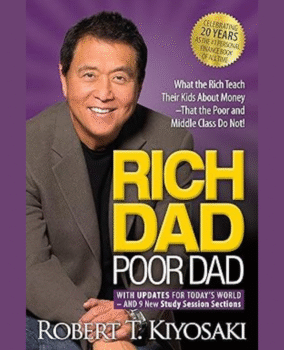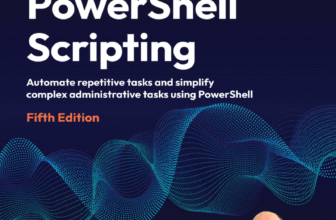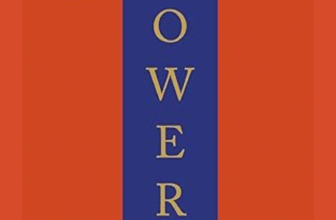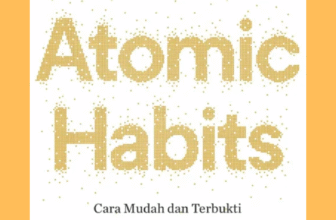Rich Dad Poor Dad by Robert Kiyosaki: Summary, Lessons and Life-Changing Insights
Introduction
In a world where most people are trapped in a cycle of working for money, Rich Dad Poor Dad by Robert Kiyosaki breaks that pattern wide open. It’s not just another finance book, it’s a mindset revolution. First published in 1997, this book continues to change the way people think about money, assets, and true financial freedom.
Robert Kiyosaki tells his story through the lens of two father figures: his biological father (the “Poor Dad”), a well-educated man who believed in job security and traditional success, and his best friend’s father (the “Rich Dad”), an entrepreneur who taught him the secrets of wealth, financial independence, and investing.
In this comprehensive guide, we’ll dive deep into everything you need to know about Rich Dad Poor Dad – including its background, key lessons, practical applications, criticisms, quotes, and even other books like it. By the end, you’ll understand why this classic is still relevant in 2025 and how it can transform your financial mindset forever.
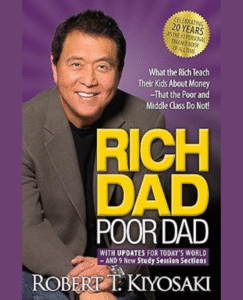
About the Author – Robert Kiyosaki
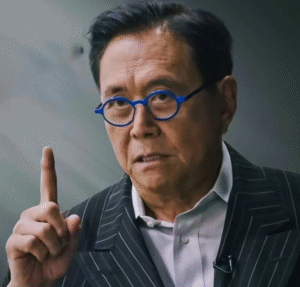
Robert T. Kiyosaki is a Japanese-American entrepreneur, investor, author, and educator best known for challenging conventional beliefs about money and success. Born in 1947 in Hawaii, Kiyosaki served as a Marine during the Vietnam War before venturing into business. His journey wasn’t smooth, he faced multiple business failures before discovering his path as an educator and financial mentor.
In 1997, he self-published Rich Dad Poor Dad, which quickly became one of the world’s best-selling personal finance books, selling over 40 million copies and translated into dozens of languages. Beyond writing, Kiyosaki is the founder of the “Rich Dad Company,” dedicated to promoting financial education through seminars, games, and online courses.
His other notable works include Cashflow Quadrant, Rich Dad’s Guide to Investing, and Increase Your Financial IQ.
Through his teachings, Kiyosaki emphasizes one timeless message – financial literacy and mindset are more important than academic education when it comes to building wealth.
Overview of Rich Dad Poor Dad
At its core, Rich Dad Poor Dad contrasts two vastly different philosophies about money:
- The “Poor Dad” represents traditional thinking – go to school, get a degree, work hard, and climb the corporate ladder.
- The “Rich Dad” teaches that true wealth comes from financial intelligence – understanding how money works, how to make it grow, and how to make it work for you.
Kiyosaki shares how these two mentalities shaped his perspective on wealth. Through storytelling and personal anecdotes, he reveals why most people remain financially stuck: not because they lack money, but because they lack financial education.
The book encourages readers to break free from the “rat race” by building assets, businesses, investments, and real estate, that generate passive income.
Whether you’re a student, employee, or aspiring entrepreneur, Rich Dad Poor Dad challenges you to question what you’ve been taught about success.
10 Core Lessons and Takeaways from Rich Dad Poor Dad
Let’s break down the most powerful principles from this classic that continue to guide millions worldwide:
1. The Rich Don’t Work for Money
Most people work for paychecks; the rich make money work for them. Kiyosaki emphasizes developing financial intelligence so you can recognize opportunities and create income streams without trading time for money.
2. Mind Your Own Business
Don’t just work for someone else’s business, build your own. Even if you have a job, invest time and effort into your side ventures or investments that grow independently of your employer.
3. Financial Education is True Power
Schools teach you how to earn money, not how to manage or multiply it. Rich people continuously educate themselves on investing, accounting, and market dynamics. Financial literacy is the foundation of wealth.
4. The Difference Between Assets and Liabilities
An asset puts money in your pocket. A liability takes money out. Many people mistakenly think their house or car is an asset, but unless it generates income, it’s not. The rich buy assets, rental properties, businesses, stocks, while the poor accumulate liabilities.
5. Work to Learn, Not to Earn
Rather than focusing solely on salary, focus on skills. Kiyosaki advises learning sales, marketing, communication, and financial management – abilities that will make you valuable in any field.
6. Overcoming Fear and Taking Risks
Fear of losing money keeps people from achieving success. Rich Dad taught that failure is part of learning. Those who embrace risks intelligently eventually build financial freedom.
7. The Power of Entrepreneurship
Owning a business or investing in one is the fastest way to financial independence. Employees earn income; entrepreneurs create it.
8. The Importance of Mindset
Your mindset determines your financial destiny. The rich mindset sees opportunity in every crisis, while the poor mindset sees risk in every opportunity.
9. The Role of Taxes and Corporations
Rich people use laws and systems (like corporations) to minimize taxes legally, while the poor often bear the heaviest tax burdens because they lack financial literacy.
10. Action Creates Wealth
Reading and learning aren’t enough – implementation is key. Kiyosaki urges readers to start small, invest, experiment, and keep moving forward.
Rich Dad vs Poor Dad: Comparison Table
| Aspect | Rich Dad | Poor Dad |
|---|---|---|
| Mindset | Thinks in terms of assets | Thinks in terms of job security |
| Income Focus | Builds passive income | Works for salary |
| Risk Approach | Takes calculated risks | Avoids risks |
| Financial Education | Lifelong learning | Relies on academic degrees |
| Wealth Creation | Invests and multiplies money | Saves money but rarely grows it |
This table perfectly illustrates the contrasting ideologies that form the core of Kiyosaki’s message.
Impact of Rich Dad Poor Dad on Readers’ Lives
Since its release, Rich Dad Poor Dad has become a global movement. Millions have credited it with transforming their financial perspective. It has been used in schools, business seminars, and even government programs to promote financial literacy.
The book has sold over 40 million copies across 100+ countries, inspiring countless entrepreneurs and investors. For many readers, it’s the “financial awakening” they never got from school.
It has even influenced today’s online financial culture, from YouTube channels to investment communities, Rich Dad Poor Dad remains a cornerstone in every financial discussion.
Criticisms and Controversies
No book is without critics. Some financial experts argue that Kiyosaki’s advice is too generalized and doesn’t account for individual risk levels. Others question whether the “Rich Dad” character was real or symbolic.
However, even critics agree that the mindset shift Kiyosaki advocates, from employee to investor thinking, is profoundly valuable. The book’s simplicity makes complex financial ideas accessible to everyone.
How to Apply Rich Dad Poor Dad Lessons in Real Life
Reading the book is one thing, applying it is what truly matters. Here’s how you can start living its principles:
- Track your assets and liabilities. Know exactly what’s making or losing you money.
- Invest in your financial education. Read, watch, and learn about investing, real estate, and markets.
- Build a side business. Even a small online venture builds entrepreneurial skills.
- Reinvest your income. Instead of upgrading your lifestyle, acquire income-generating assets.
- Surround yourself with financially educated people. Your circle influences your mindset.
Start small, think long-term, and focus on creating systems that generate passive income – that’s how money begins to work for you.
Books Like Rich Dad Poor Dad
If you loved Rich Dad Poor Dad, here are other books that expand your understanding of wealth and mindset:
- The Millionaire Next Door – Thomas J. Stanley & William D. Danko
- Think and Grow Rich – Napoleon Hill
- The Intelligent Investor – Benjamin Graham
- The Psychology of Money – Morgan Housel
- Cashflow Quadrant – Robert Kiyosaki
- Atomic Habits – James Clear
- Your Money or Your Life – Vicki Robin
- The 4-Hour Workweek – Tim Ferriss
Each book complements Kiyosaki’s teachings by exploring different sides of financial growth, habits, and psychology.
Famous Quotes from Rich Dad Poor Dad
Here are some timeless quotes that continue to inspire readers worldwide:
“Don’t work for money; make money work for you.”
“The poor and the middle class work for money. The rich have money work for them.”
“The love of money is not the root of all evil. The lack of money is the root of all evil.”
“It’s not how much money you make, it’s how much money you keep.”
“Financial freedom is available to those who learn about it and work for it.”
These quotes summarize the spirit of Rich Dad Poor Dad – that wealth begins with awareness and education.
Frequently Asked Questions (FAQs)
1. What is the main idea of Rich Dad Poor Dad?
The book teaches that financial education and mindset are more important than job security. Wealth comes from acquiring assets, not working harder for money.
2. Who is the real Rich Dad?
Kiyosaki has never revealed his identity, suggesting he may be a composite character representing the mindset of wealthy mentors.
3. Is Rich Dad Poor Dad still relevant in 2025?
Absolutely. The principles of asset-building, entrepreneurship, and financial independence remain timeless, even in today’s digital economy.
4. What age should I read Rich Dad Poor Dad?
Teens and young adults benefit most from it, but it’s valuable at any stage of life when you want to shift from employee thinking to investor thinking.
5. What are the best lessons from the book?
Key lessons include understanding assets vs liabilities, building passive income, and continuously improving financial literacy.
6. Is Rich Dad Poor Dad based on real events?
While the characters may be symbolic, the lessons are based on real financial principles Kiyosaki learned through experience.
7. Does this book teach investing?
It introduces the mindset behind investing but doesn’t offer step-by-step investment guides. It prepares you mentally to understand money.
8. What is the Cashflow Quadrant?
It’s a concept Kiyosaki developed in his second book, describing four types of income earners: Employee, Self-Employed, Business Owner, and Investor.
9. Can you get rich just by reading this book?
No book alone makes you rich. But this one can change your mindset, the foundation for wealth creation.
10. How can I apply Rich Dad Poor Dad in real life?
Start by tracking finances, learning about assets, and gradually building investments or side hustles that generate recurring income.
Conclusion
Rich Dad Poor Dad by Robert Kiyosaki isn’t just a book – it’s a mindset revolution that redefines what wealth truly means. It teaches that real freedom comes from financial independence, not job titles or degrees.
If you’ve ever felt stuck in the rat race, this book offers a way out – through knowledge, courage, and a shift in perspective.
Start today. Learn. Build. Invest.
Because as Kiyosaki reminds us:
“The only difference between a rich person and a poor person is how they use their time.”
Free Download (PDF)
Free DownloadDownload — Rich Dad Poor Dad by Robert Kiyosaki (PDF)
Format: PDF (eBook)
File size: varies by edition
Short disclaimer:
This download is presented for educational purposes only. Always support the author and publisher by purchasing the official edition if you find the material useful. Unauthorized distribution or piracy harms authors and the community.
Read Also: Looking for the Enemy Taliban Book Free Download
Was this article helpful?
Loved it? Share your thoughts with a quick comment, submit recommendations and suggestions or leave a star rating in comments!

